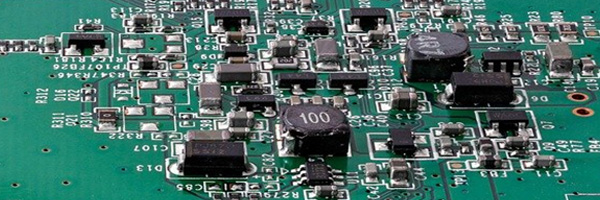Home › EIDA Forum › Today’s Discussion and Announcements › Component Famine (Opinion)
- This topic is empty.
-
AuthorPosts
-
-
at #4350
Tingting Zhang
KeymasterIt will have been impossible to avoid media coverage of the shortage of semiconductors at the moment. There may be some consolation that it is bringing some broad awareness of the electronics industry. But the coverage has concentrated on the few large semiconductor markets like automotive and consumer electronics.
While these large markets face some pain it is the industrial electronics sector that is plunged into true crisis – and that is the market that makes up nearly all of the electronics industry in South Australia. The South Australian electronics industry (and all the industries that rely on it) are facing a complete component stop just as the Lower Lakes of the Murray stopped receiving water and silted over. And for the same reasons.
First to be clear this is not a crisis for the semiconductor manufacturers – it is clear they are not manufacturing less than they did previously. Texas Instrument’s revenue increased from $US3.3b in Q4 2019 to $US4.1b in Q4 2020. That 22% increase in revenue led to a 45% increase in profit. The extent of their crisis is that they can not fully realize the potential of the increased demand. Their threat is political. With raised awareness of our society’s reliance on semiconductors, the years of being left alone (through ignorance ) by government may be coming to an end.
Secondly – for the large market players – the ones that have power in a relationship – the ones that decide whether to use billions of dollars of processors from manufacturer A or manufacturer B – their crisis is one of logistics management (with zero buffer stock detailed management becomes critical) and again of not being able to make full use of the increase in demand. They are not going backwards – they are shipping more than previously – just not as much as they could ship if they had more parts. It seems axiomatic in fact that they are getting a greater percentage of the total production of semiconductors by pushing out the other buyers.
That brings us to our local high value electronics industry. While collectively around the world the industrial electronics sector is significant it is made up of a large number of small players. Their power is small. It is an ultimate irony that this lack of power is what leads them to get any supply at all in normal times. The reasons that the megalith semiconductor companies deal with the shrapnel of industrial electronics is that it has good margins. In normal times the large buyers pay for parts by the square mm of silicon and the semiconductor manufacturers cringe at the IP their large customers exploit with little financial contribution. Semiconductors sold into the industrial market are very different. In this market manufacturers can take multiple of the manufacturing cost.
But that is normal times. The large buyers are now price takers – not price setters. The value of industrial electronics has vaporized. The manufacturers also need to operate strategically – it may not be worth taking the risk of not meeting the increased demand of a large customer in order to pick up some higher margin scraps.
So where does this leave the local industry. In true crisis. For some component categories the residual stocks have dried up. For companies like mine that can adapt quickly to different parts, they have adapted and the last drops of stock are gone. There is some stock held by unauthorized supply channels. Channel that the major vendors once despairingly called grey market until they realized the potential of it and started to play in it. The use of this stock comes with risks in relation to quality and it won’t last long anyway.
It seems the supply of semiconductors will not come good in the next year or two. The industrial electronics sector faces a crisis. We can only speculate what adaptations may evolve. Will component recycling move from the dark shed to accepted practice? Tree bark is not normally considered edible but eating it has saved many from starvation during famine.
There is some uncertainty about how long it will take to get on top of the supply shortage – fans of the idea that double and triple ordering have greatly exaggerated the issue are likely deluded – but for our sake I hope they are right in their belief that the incredible demand caused by panic buying will resolve once people feel comfortable with their stock on hand. I am not confident.
Like the locals who looked out over the troubled Murray Lower Lakes it comes down to our lack of power and agency over something we rely on so deeply.
By: Donald Kay donald@eida.asn.au
-
-
AuthorPosts
- You must be logged in to reply to this topic.

